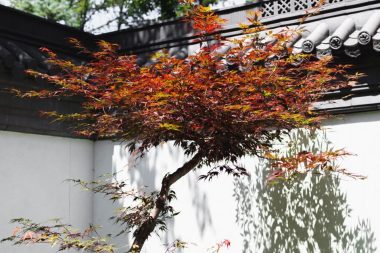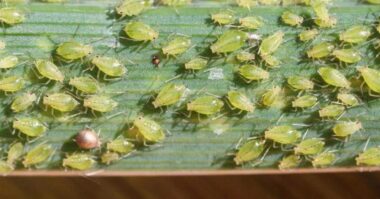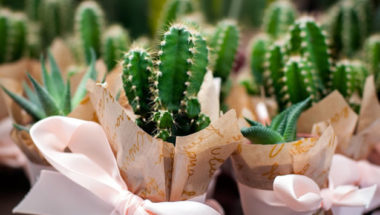We see our interior as a cocoon, a protective shelter in which our home blossoms. In reality, indoor air pollution is the cause of many illnesses, including allergies and asthma.
Contents
A healthy home thanks to green plants
Poor indoor air quality has a significant impact on our health. Its effects range from simple discomfort (olfactory discomfort, drowsiness, eye and skin irritation) to the appearance or aggravation of more serious conditions such as asthma, allergies, cancer and even fatal poisoning.
10 plants for a healthy home
1. The areca (Chrysalidocarpus lutescens)
Originally from Madagascar, the Areca belongs to the palm family. Easy to cultivate, in pot as on the ground, this exotic plant needs sun and water in quantity. In a well exposed environment, it can reach up to 3 meters high! Its owner will take care to water it regularly: every two days in spring and summer; every two weeks in autumn and winter.
Depolluting action : The Arec palm tree should be placed in a freshly painted room, especially if the paint used contains xylene. It also effectively eliminates formaldehyde found in building materials.
2. The Rhapis (rhapis excelsa)
Always in the family of the palms, your choice of depolluting plant can be carried on the rhapis. First of all for the elegance of its foliage, which earned it the name Lady Palm. Then for its ease of maintenance. Far from the forests of Southeast Asia where it comes from, the palm-bamboo slowly reaches 1.5 meters. It thrives best in environments with high humidity.
Depolluting action: the rhapis arrives at the top of the plants which eliminates the ammonia. It therefore finds a place of choice in the kitchen, where most cleaning products are used.
3. The Phalanx (Chlorophytum comosum)
With its long, thin, frank green leaves, the phalanx or spider plant gives a touch of pep to an interior. It is satisfied with little water and little sunlight. Its hairy aspect and its falling leaves make it a decorative object most often suspended or placed on a shelf. Another characteristic of Chlorophytum: it multiplies very quickly. In every room of the house its pot.
Depolluting action: The spider plant is one of the most effective depolluting plants. It eliminates in particular benzene, toluene, formaldehyde and xylene. It absorbs almost all the carbon monoxide in 24h.
4. Ivy (Hedera helix)
Ivy is best known for its ability to invade facades. However, its depurative qualities make it an indoor plant of choice. It can be found in every room of the house.
Depolluting action : Ivy filters many indoor pollutants: formaldehyde, toluene, trichlorethylene as well as carbon monoxide emitted by heating appliances. It eliminates benzene within 24 hours.
5. The Moon Flower (Spathiphyllum wallissi)
The Fleur de Lune has well-drawn white flowers that contrast with its deep green foliage.
Depolluting action: the Fleur de Lune absorbs a large number of volatile organic compounds contained in particular in interior design materials (paints, glues, varnishes …). This makes it a solid ally for DIYers. To be placed in a rather dimly lit room, such as a bedroom.
6. The Ficus (Ficus bennendijki ‘Alii’ and ficus elastica)
The ficus is perhaps the most emblematic house plant. The one which, robust, will occupy our apartment for years. For the greater good of the air that we breathe!
According to the NASA study, the ficus would have the capacity to reduce by 50% the concentration of formaldehyde and 30% the benzene concentration of a room in one day.
Depolluting action: among all the ficus species, rubber is the most effective against formaldehyde. To be placed in the entrance.
7. Dracaena (dracaena spp.)
Dracaenas, or dragon trees, are also very common in interiors. They are easily recognizable by their long, narrow and variegated leaves. These plants are very tolerant of irregular watering, which makes them easy to live with. However, they are toxic to cats and dogs that ingest them.
Depolluting action : Dracaena plants absorb xylene and benzene to a lesser extent. Trichoethylene and formaldehyde are much better eliminated by the plant which will find its place in a dimly lit entrance.
8. The Boston fern (Nephrolepis exaltata ‘Bostoniensis’)
The Boston fern is one of the champions of indoor air pollution control. It reduces concentrations of 9 VOCs, with formaldehyde at the top. Maintained at constant heat, this fern grows all year round. Its favorite environment? A warm and humid place, in bright light. Be careful not to expose it to direct sunlight, otherwise it will burn its foliage.
Depolluting action: the Boston fern is one of the best depolluting plants. It absorbs formaldehyde and xylene very well.
9. The gerbera (Gerbera jamesonii)
With its large daisy shape, the gerbera is a must for any bouquet. Good news, it also purifies the indoor air! It will color your home longer if it benefits from direct sunlight and plenty of water.
Depolluting action : Gerbera has a strong absorbing power against formaldehyde, toluene, benzene, trichloethylene. It is the ideal plant for rooms frequented by smokers.
10. The pothos (Scindapsus aureus)
Pothos is another great classic of interiors. It is a climbing plant with green leaves stained with yellow. Its ease of maintenance makes it a good first choice for beginners. Please do not put it within reach of children: its toxic sap irritates the skin!
Where does indoor pollution come from?
Outdoor and indoor air are not polluted in the same way. In our homes, pollutants are hidden in the combustion appliances (boilers, stoves, water heaters…), in the furniture, in the cleaning products and in everyday consumer products (scented candles, incense sticks…).
Pets and passive smoking also contribute to the alteration of the air1. All these sources emit three types of pollutants:
- Chemical pollutants such as volatile organic compounds, carbon monoxide, or phthalates.
- Bio-contaminants such as molds, dust mite allergens, pet allergens and pollens…
- Particles and fibres, such as asbestos.
Knowing that we spend an average of 14 hours a day in our home, better adopt simple gestures against the accumulation of these pollutants. Or let green plants do it for us.
Summary
Yucca, aloe vera or cactus, the depolluting plants are perfect allies to cleanse and purify our interiors. Discover how these plants work and which ones to install directly.








